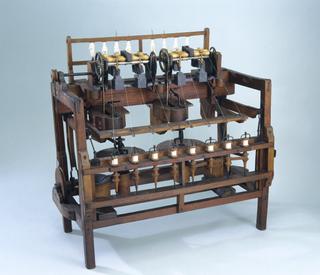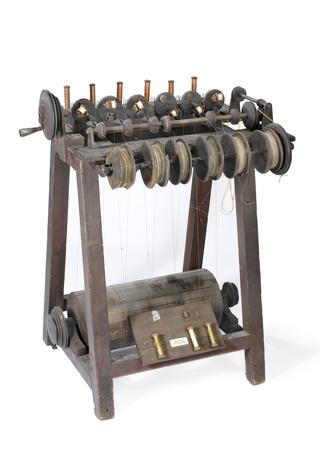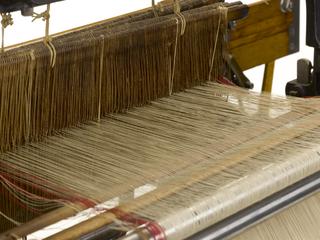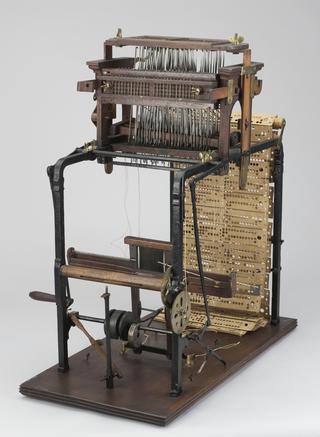
Weaving power loom shuttle
- PART OF:
- Five power loom shuttles, 1858-1862

One of five power loom shuttles, by J. Harrison and Sons, Blackburn, Lancashire, England, 1858-1862.
Shuttles like these were essential to Britain’s cotton industry. A shuttle carries yarn – the weft – back and forth across a loom, weaving cloth as it passes over and under the warp threads. From the early 19th century armies of mill workers followed the shuttles on their power looms back and forth, deftly catching them and replacing spent spools to keep the loom running and contracting chronic diseases from ‘kissing the shuttle’ to suck thread through the eyehole.
These boxwood shuttles only differ from a hand loom shuttle because they do not have rollers. Plus, the spring tongue is hinged like a pocket-knife, so that it projects out from the mortise when inserting a fresh cop of yarn. This improvement dated from the early 19th century: allowing a cop of greater length to be used.
Details
- Category:
- Textiles Machinery
- Object Number:
- 1862-9/5
- Materials:
- box (wood), steel (metal) and complete
- Measurements:
-
overall: 340 mm x 90 mm x 140 mm
- type:
- shuttle
- credit:
- J. Harrison and Sons




